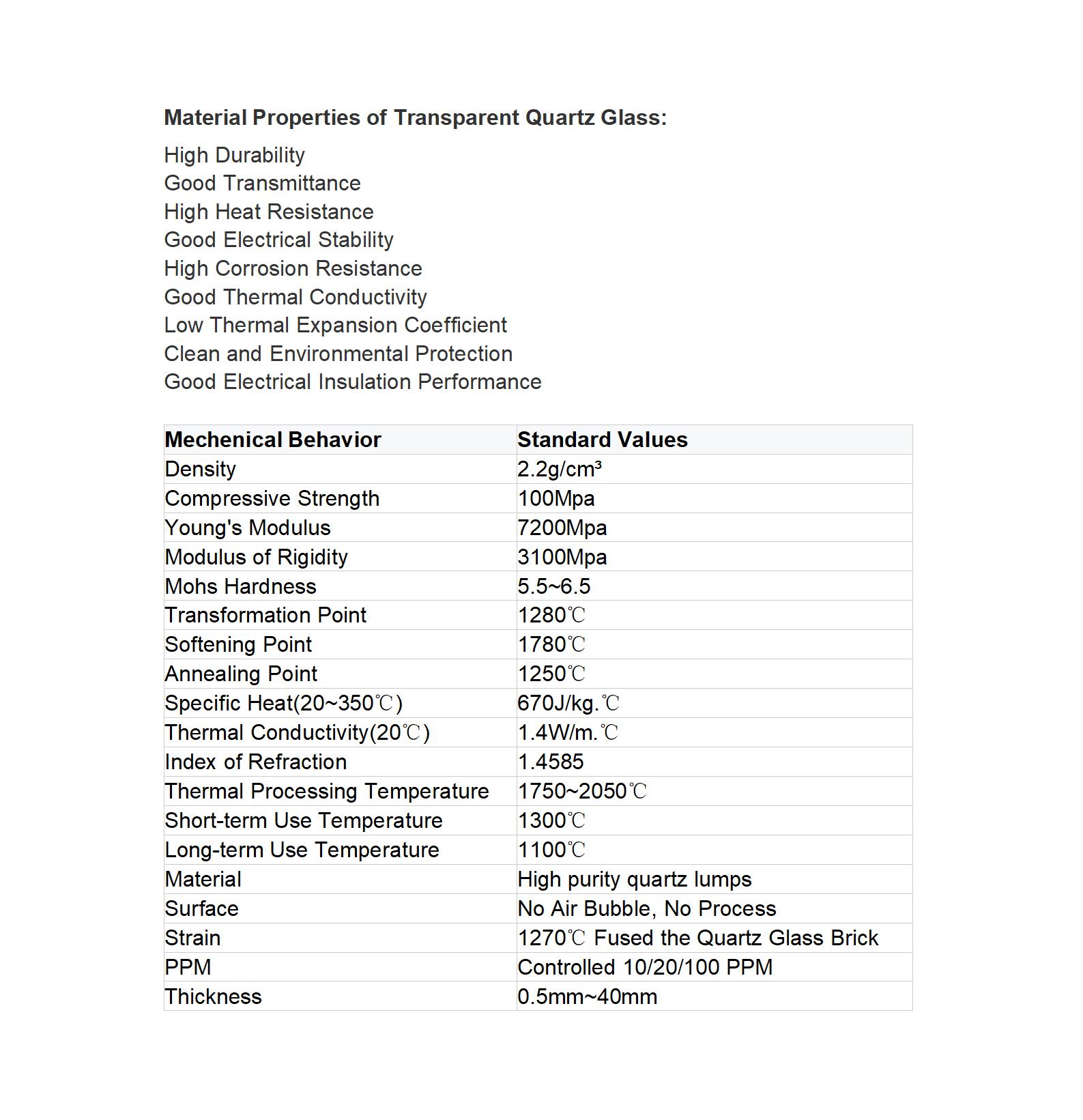T: +86-518-85528012
E: nick@luverrequartz.com
E: nick@luverrequartz.com
1st floor Runlian industrial center No. 116 QuFeng Rd., Haizhou Economic and technological development zone Lianyungang City, Jiangsu Province, China 222062
High transmittance printed circuit board quartz glass plate
High transmittance printed circuit board quartz glass board, also known as quartz substrate circuit board
LUVERRE quartz
99.99%
Inner with Vacuum PVC bag and then wrapped with air bubble film, outer with wooden box.
as per customer's requirement
| Availability: | |
|---|---|
High transmittance printed circuit board quartz glass plate
High transmittance printed circuit board quartz glass board, also known as quartz substrate circuit board, is an electronic component assembly and connection technology that prints circuit patterns on quartz substrates.

Physical properties: Quartz substrate has high hardness, high melting point, low thermal expansion coefficient, and excellent thermal stability. These characteristics enable quartz based circuit boards to maintain stability in high-temperature environments and have good dimensional stability.
Electrical characteristics: Quartz substrate has excellent insulation performance, low dielectric loss, and high breakdown voltage, which can provide good electrical isolation and signal integrity.
Corrosion resistance: Quartz substrate has high resistance to acids, alkalis, and chemical solutions, and has excellent corrosion resistance.
High frequency applications: Due to its low dielectric loss and excellent high-frequency characteristics, quartz substrates are widely used in radio frequency (RF) and microwave electronic devices, such as antennas, filters, and oscillators.
Optical applications: Quartz substrates have good optical transparency and are widely used in optoelectronic devices and optical systems, such as optical sensors, fiber optic communications, and lasers.
High temperature applications: Quartz substrates can withstand working in high-temperature environments and are suitable for the manufacturing of high-temperature electronic devices and sensors.
Chemical analysis: Quartz based circuit boards are commonly used in chemical analysis instruments, such as liquid chromatography (HPLC) and gas chromatography (GC).

Quartz based circuit boards have important application value in special fields such as high frequency, high temperature, and optics due to their excellent physical, chemical, and electrical properties.
High transmittance printed circuit board quartz glass plate
High transmittance printed circuit board quartz glass board, also known as quartz substrate circuit board, is an electronic component assembly and connection technology that prints circuit patterns on quartz substrates.

Physical properties: Quartz substrate has high hardness, high melting point, low thermal expansion coefficient, and excellent thermal stability. These characteristics enable quartz based circuit boards to maintain stability in high-temperature environments and have good dimensional stability.
Electrical characteristics: Quartz substrate has excellent insulation performance, low dielectric loss, and high breakdown voltage, which can provide good electrical isolation and signal integrity.
Corrosion resistance: Quartz substrate has high resistance to acids, alkalis, and chemical solutions, and has excellent corrosion resistance.
High frequency applications: Due to its low dielectric loss and excellent high-frequency characteristics, quartz substrates are widely used in radio frequency (RF) and microwave electronic devices, such as antennas, filters, and oscillators.
Optical applications: Quartz substrates have good optical transparency and are widely used in optoelectronic devices and optical systems, such as optical sensors, fiber optic communications, and lasers.
High temperature applications: Quartz substrates can withstand working in high-temperature environments and are suitable for the manufacturing of high-temperature electronic devices and sensors.
Chemical analysis: Quartz based circuit boards are commonly used in chemical analysis instruments, such as liquid chromatography (HPLC) and gas chromatography (GC).

Quartz based circuit boards have important application value in special fields such as high frequency, high temperature, and optics due to their excellent physical, chemical, and electrical properties.